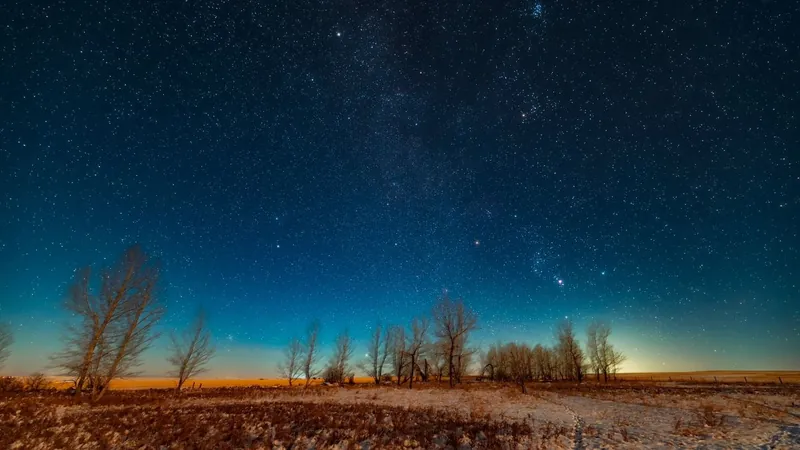
Thanksgiving Night Sky 2024: Gaze at the Celestial Feast of Venus, Jupiter, and Saturn!
2024-11-27
Author: Rajesh
Thanksgiving Night Sky 2024: Gaze at the Celestial Feast of Venus, Jupiter, and Saturn!
As families across America gather around the dining table this Thanksgiving, indulging in turkey and various holiday treats, a cosmic celebration awaits under the night sky. After the last slice of pumpkin pie has been served, why not step outside and enjoy the remarkable celestial display overhead? If you’re lucky enough to have a clear sky and some binoculars or a telescope, this could become a delightful new family tradition.
The Celestial Trio: Venus, Jupiter, and Saturn
Thanksgiving night brings an extraordinary opportunity to witness three of the brightest planets: Jupiter, Venus, and Saturn. With the early evening sky illuminated by these magnificent celestial bodies, you won’t want to miss out!
As darkness settles, Jupiter rises staunchly to the north-east, showcasing its brilliance as it approaches its zenith for 2024. This gas giant will captivate onlookers with its bright, silver-white glow, remaining visible throughout the night. Spotting Jupiter is easy — it will be situated about a clenched fist’s width above the horizon approximately 90 minutes after sunset.
Meanwhile, to the southwest, Venus shines even more brightly than its companions, climbing higher in the sky each night. By the end of November, it will be visible for a large part of the evening, illuminating the descent of nightfall. Through a telescope, Venus reveals its striking crescent shape, subtly adding a spectacular touch to your astronomical observations.
Not to be outdone, Saturn, with its iconic rings, will appear serenely positioned in the southern sky, halfway between Jupiter and Venus. For those equipped with a decent telescope, witnessing Saturn’s rings for the first time is a breathtaking experience, making the journey outdoors truly worthwhile.
A Peek Into the Stars and Constellations
In addition to the mesmerizing planets, the Thanksgiving night sky will feature various stars and constellations. The brilliant yellow star Capella will ascend in the northeast, hinting at the spectacular winter sky to come with the arrival of the Orion constellation. The Summer Triangle, consisting of Vega, Altair, and Deneb, will still linger in the west, inviting viewers to explore the stunning fields of the Milky Way.
Look towards the south-southeast, where the Great Square of Pegasus can be easily identified — a defining feature of the autumn sky. And for those who have a view of the northern horizon, the Big Dipper will make an enchanting appearance, seemingly larger due to the "moon illusion" effect.
Historical Reflections under the Stars
As you gaze upward, it’s fascinating to consider the historical elements of the event. The very first Thanksgiving reportedly took place in 1621, a time when the light from certain stars you may see tonight was already on its way to Earth. Objects such as Algenib and Almach shine brightly from roughly 400 light-years away, the very same light that traveled for centuries to be viewed by those who first settled in what is now Massachusetts.
Take a moment to absorb the beauty of the stars and think about the ancient history they represent — a timeless connection to the past.
So, as you gather with loved ones this Thanksgiving, don’t forget to venture outside and appreciate the beauty of the night sky. Wishing everyone a wonderful and celestial Thanksgiving filled with joy, laughter, and the wonders of the universe! 🌌✨

 Brasil (PT)
Brasil (PT)
 Canada (EN)
Canada (EN)
 Chile (ES)
Chile (ES)
 España (ES)
España (ES)
 France (FR)
France (FR)
 Hong Kong (EN)
Hong Kong (EN)
 Italia (IT)
Italia (IT)
 日本 (JA)
日本 (JA)
 Magyarország (HU)
Magyarország (HU)
 Norge (NO)
Norge (NO)
 Polska (PL)
Polska (PL)
 Schweiz (DE)
Schweiz (DE)
 Singapore (EN)
Singapore (EN)
 Sverige (SV)
Sverige (SV)
 Suomi (FI)
Suomi (FI)
 Türkiye (TR)
Türkiye (TR)